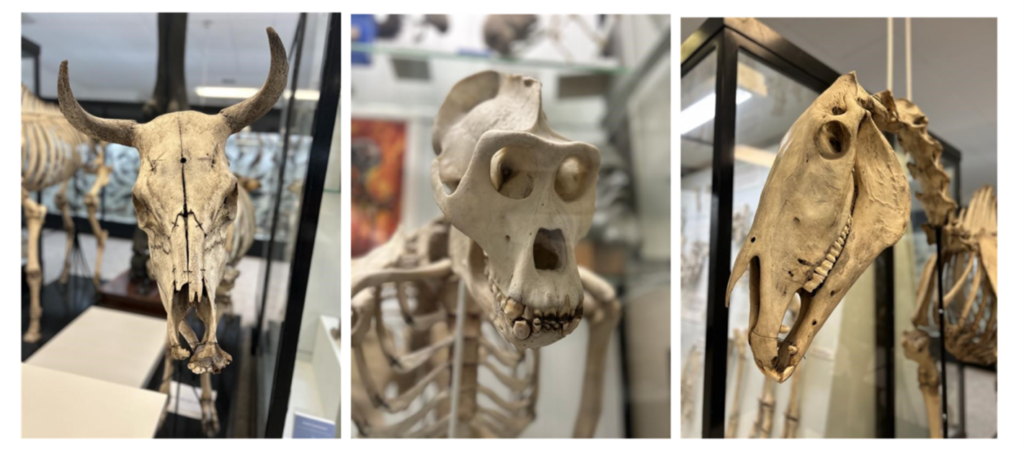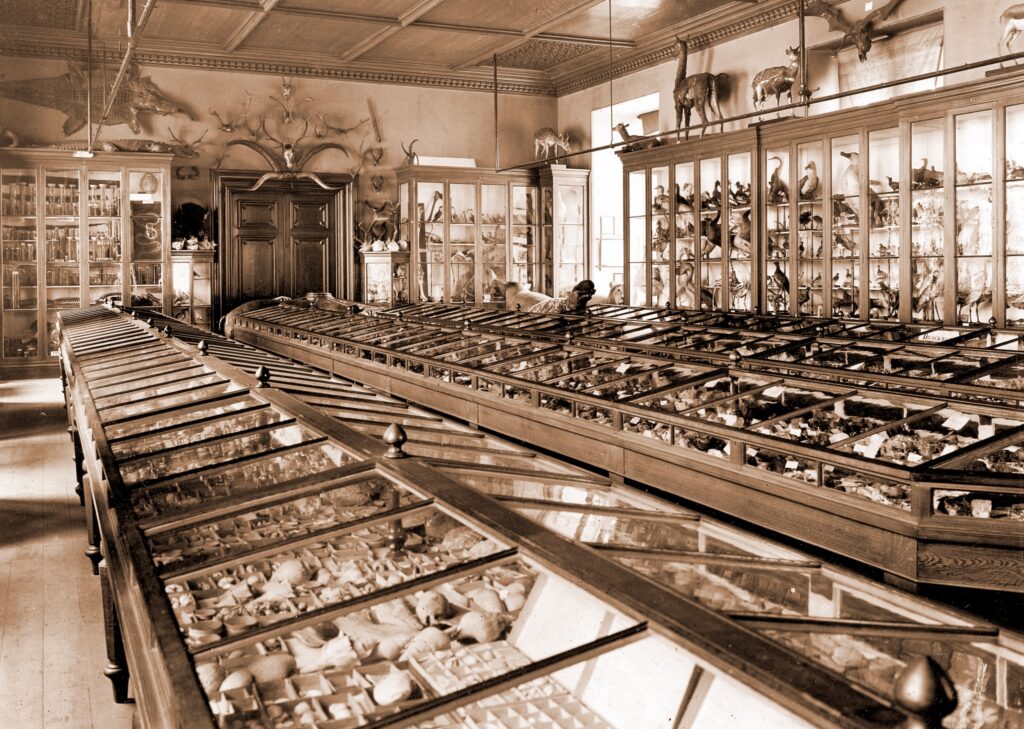Natural history in a new light at St Andrews

In the centre of the Bute Medical Building lie hundreds of skeletons, birds, mammals, insects, amphibians, and many, many more natural specimens. This is the Bell Pettigrew Museum of Natural History, the University of St Andrews’ collection of around 13,500 specimens and related scientific instruments spanning centuries and continents. Since its opening in 1912, the museum has been used as a teaching resource as well as a sightseeing venue in St Andrews, where visitors are awed by the vast expanse of living and extinct species on display. But until recently, little was known about where the collection came from – and its connections to empire.

Conall Treen, a PhD student in the School of History, studies the intersection between colonialism and natural history, using the University’s natural science collection as a case study. His research focuses particularly on specimens from the settler colonies of Australia and New Zealand, which have historically been seen as paragons of ‘exotic’ and ‘otherworldly’ natural species. They have also played host to long legacies of colonial violence that Treen argues are a significant aspect of the history of natural science collections. In his thesis, he examines several historical accounts to unpack these relationships between colonialism and natural history, then explores questions of how collections and materials in St Andrews have reflected these relationships.
Based on extensive archival research, Treen has found that in Australia and New Zealand, scientific knowledge did not come singularly from European encounters with the natural environment. Rather, it was heavily reliant on the labour, expertise, and knowledge of Indigenous people to collect specimens and inform European scientists of their properties. For example, in Queensland, Australia, European scientists drew from the knowledge and labour of commercial collectors to develop their research. However, these collectors had in turn worked with the a paramilitary organisation established to eradicate Aboriginal people, to clear land for their research by displacing communities and providing Aboriginal Australian guides for their expeditions. While Indigenous people continued to express agency through resistance and cultural preservation, numerous case studies like these underpin the natural history collections in St Andrews and around the world – highlighting a significant connection between these collections and colonial violence.
As such, a broader mission of Treen’s work is to recontextualise the natural history museum in ways that are visible to the public, so that this history can be learned from and acknowledged. This comes in line with wider movements of decolonisation in museums, which the UK Museums Association defines as “a long-term process that seeks to recognise the integral role of empire in museums – from their creation to the present day. Decolonisation requires a reappraisal of our institutions and their history and an effort to address colonial structures and approaches to all areas of museum work.” This process requires a questioning of what stories museums are presenting – and not presenting – in their content and organisation. For instance, by only providing baseline taxonomic information about each species, museums exhibit a very authoritative stance on their specimens from the perspective of Western science. With reflections on the acquisition and significance of species in other cultures – for example, spiritual or historical significance – natural history collections could take on a much broader scope in informing the public of how humans have interacted with the natural environment throughout time and space.

This recognition pays respect to the Indigenous communities who faced severe injustice in the formation of museum collections, and allows visitors to learn from the past – and from other cultures – about other ways to consider and interact with the natural world. Particularly in the context of university collections, which serve the additional role of teaching resource, Treen hopes to uplift these stories to inspire new ways of thinking about human relationships with the natural environment, and how these relationships are reflected in our museums.
To explore the Museum’s collection, and beyond, click here.